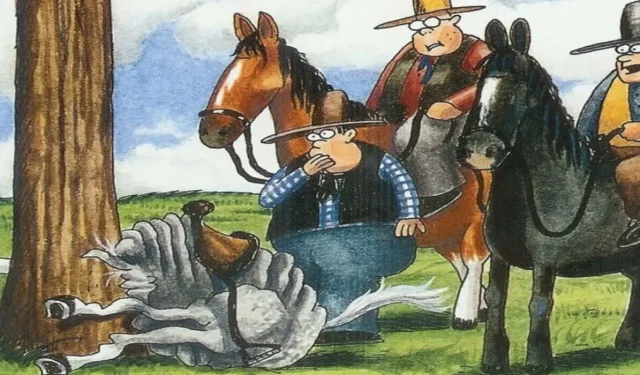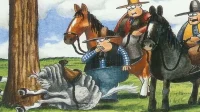In Gary Larson’s iconic comic strip The Far Side, the representation of cowboys diverges notably from their traditional heroic image. While mainstream media often portrays these figures as audacious and rugged, Larson’s humor brings a refreshing, quirky perspective that reveals a more comedic and, at times, dorky side of cowboy culture. In this world, even the bravest cowboys find themselves in absurd situations that challenge their tough exteriors.
Larson masterfully juxtaposes the image of well-admired historical figures and events against the absurdity found in his portrayal of cowboys. These characters often exhibit nervousness about mundane issues, such as a teenage cowboy fretting over crashing into a tree or tattling on fellow cowboys, enhancing the “dorky”vibe of their adventures.
10
“What Are You Going to Tell Your Dad, Chuck?”
January 17th, 1984
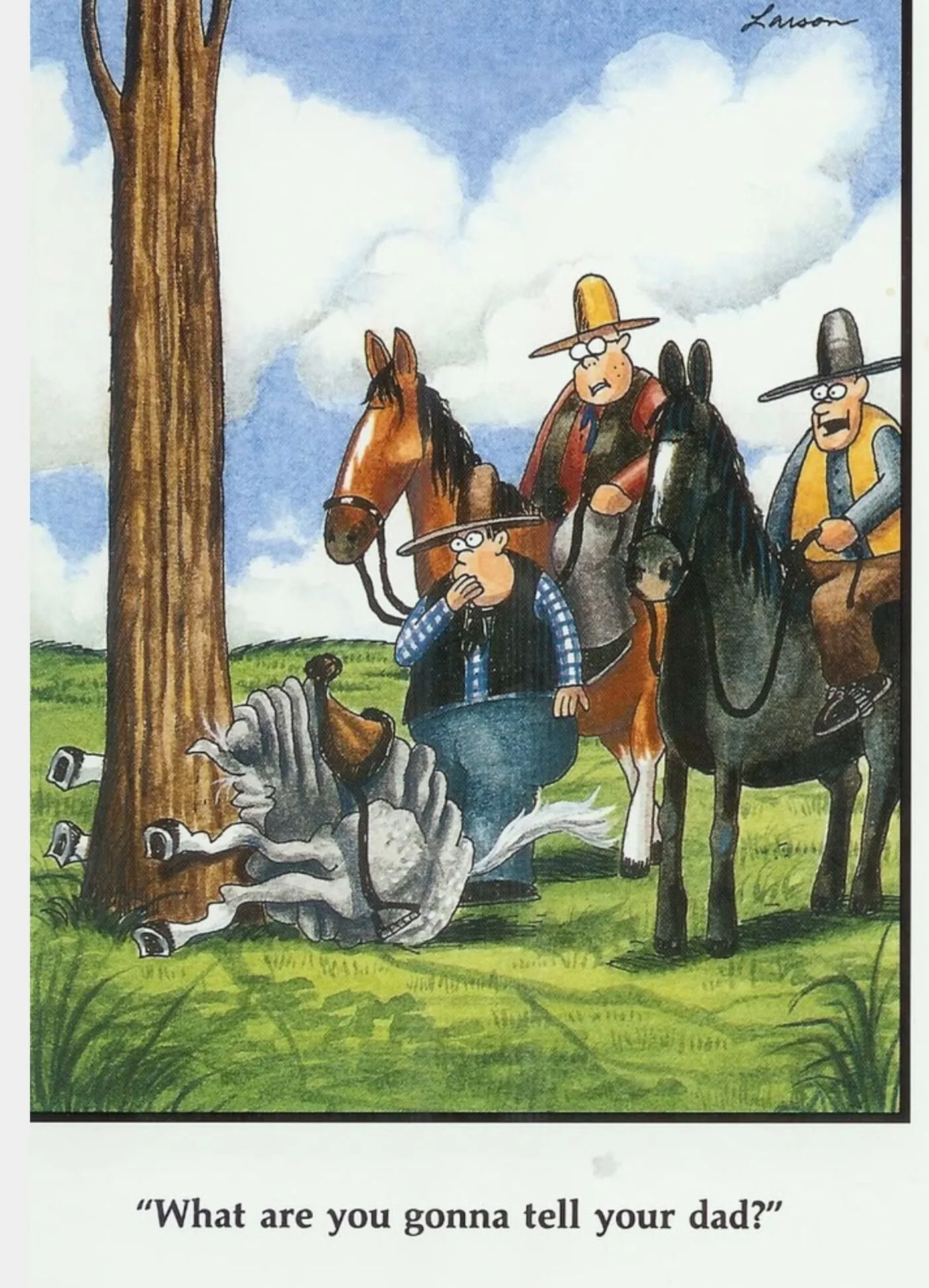
In one particularly memorable panel, a boy named Chuck takes his father’s horse for a joyride only to crash it into a tree, leaving his friends aghast. This comic cleverly shifts the trope of teenage recklessness—usually associated with cars—onto the backs of horses, resulting in a humorous take on the classic rite of passage.
While traditional portrayals depict cowboys as brave and capable, Larson flips this narrative. Chuck’s predicament reflects the anxiety of a teenager facing their father’s disappointment, capturing a universal fear that resonates beyond mere comedic effect. Clearly, both Chuck and the horse are in for a rough ride.
9
“A Little Hat”
January 29th, 1983
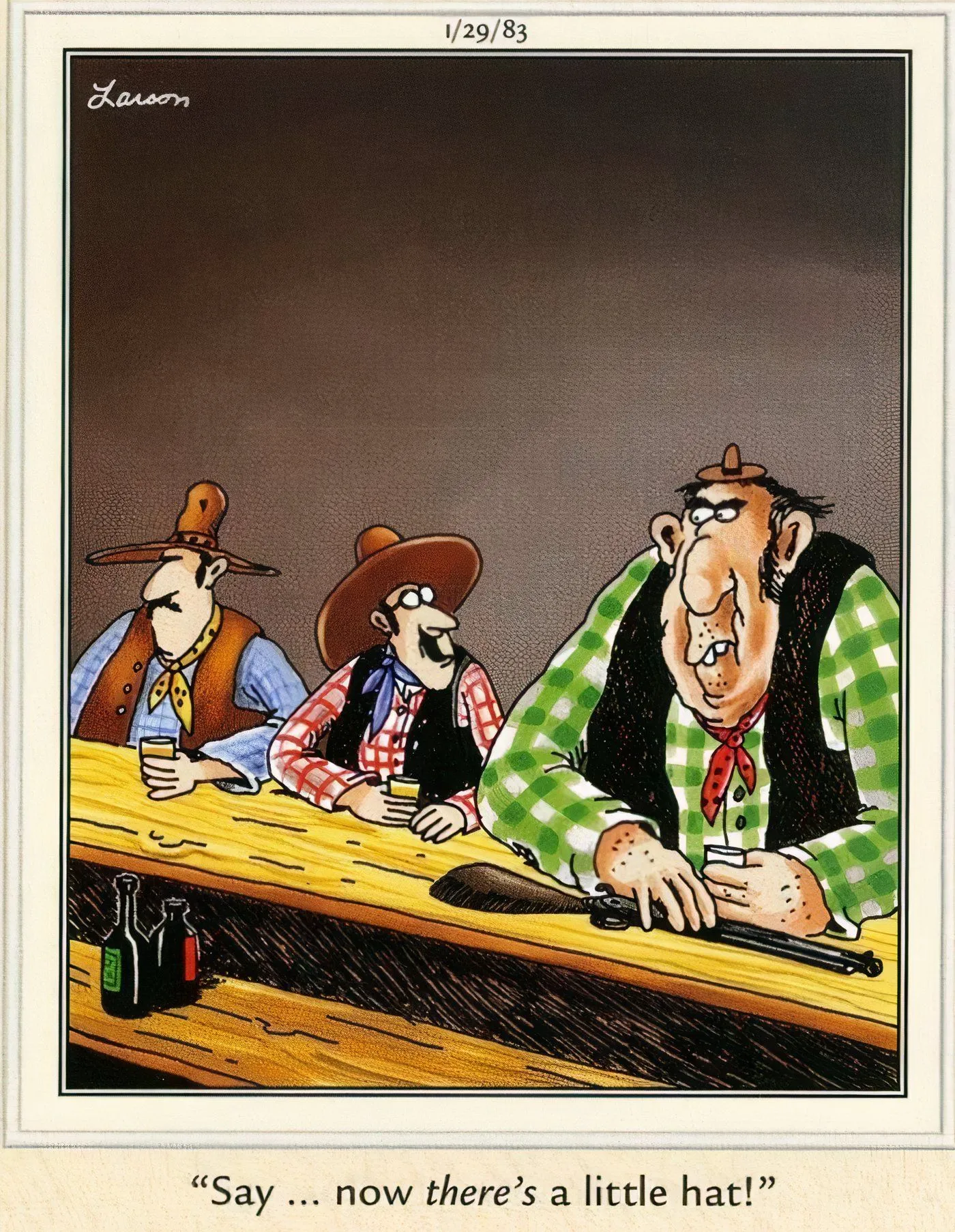
Another strip features three cowboys at a bar, one sporting an absurdly small hat that is hilariously disproportionate to his size. One cowboy comments on this unusual fashion choice, prompting readers to contemplate why someone would don such a diminutive accessory. Is he fashion-forward, or merely misunderstood?
This comic deftly contrasts the rugged cowboys typically celebrated in Western films; instead, Larson presents a figure whose choice of headwear puts him firmly into the “dorky”category, invoking laughter through the sheer silliness of the image.
8
“The Same Kind of Hat”
April 14th, 1983
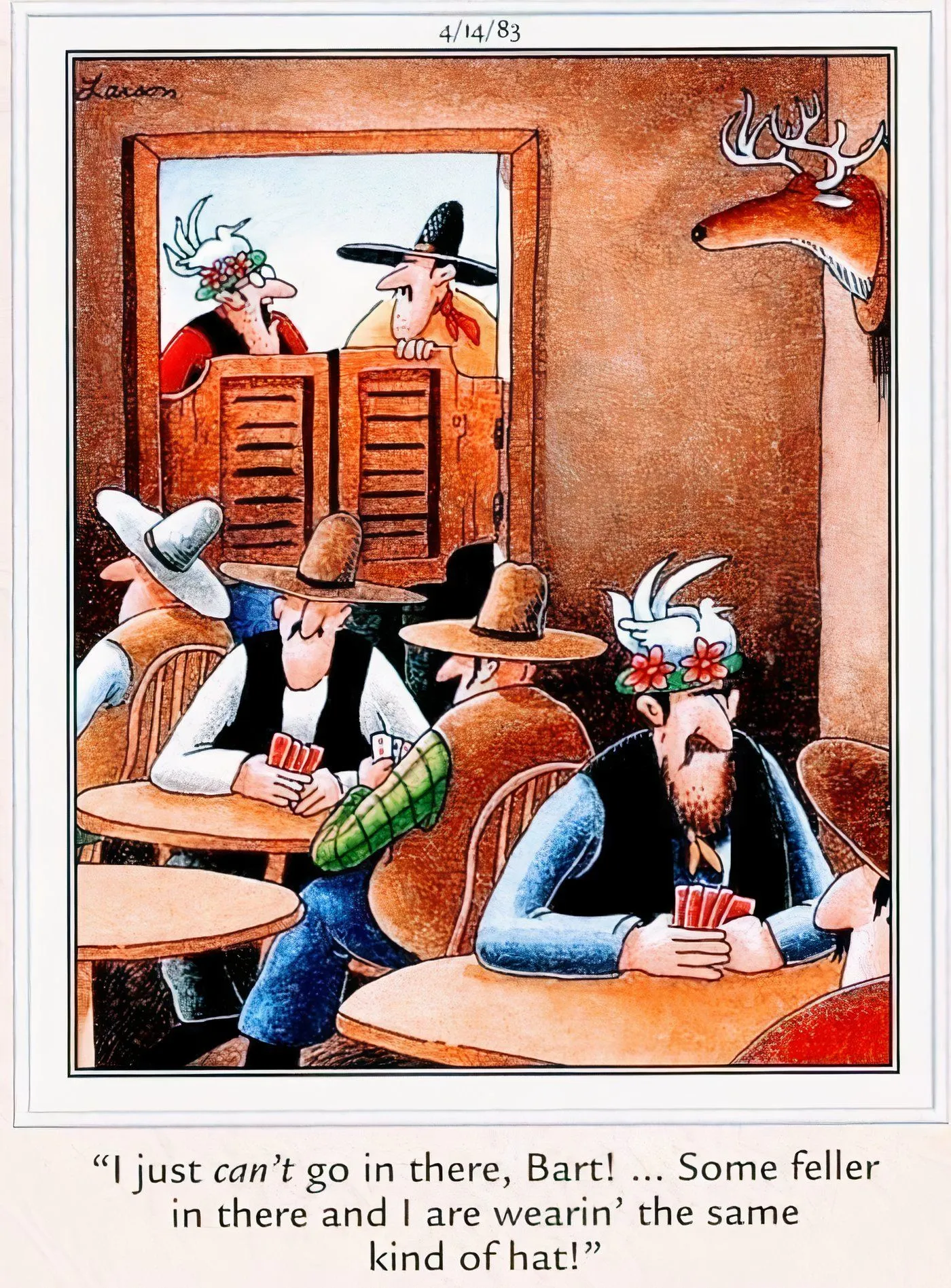
In another clever gag, one cowboy laments that he cannot enter the saloon because another cowboy shares his unique flower crown and bird hat. This scenario highlights the unfortunate reality of matching outfits—an undeniable faux pas, even in the Wild West.
The absurdity of cowboys wearing such flamboyant headgear strengthens the comedic effect, shedding light on Larson’s ability to turn stereotypes on their heads while offering a humorous commentary on identity and individuality.
7
“Red Dog Saloon”
November 19th, 1982
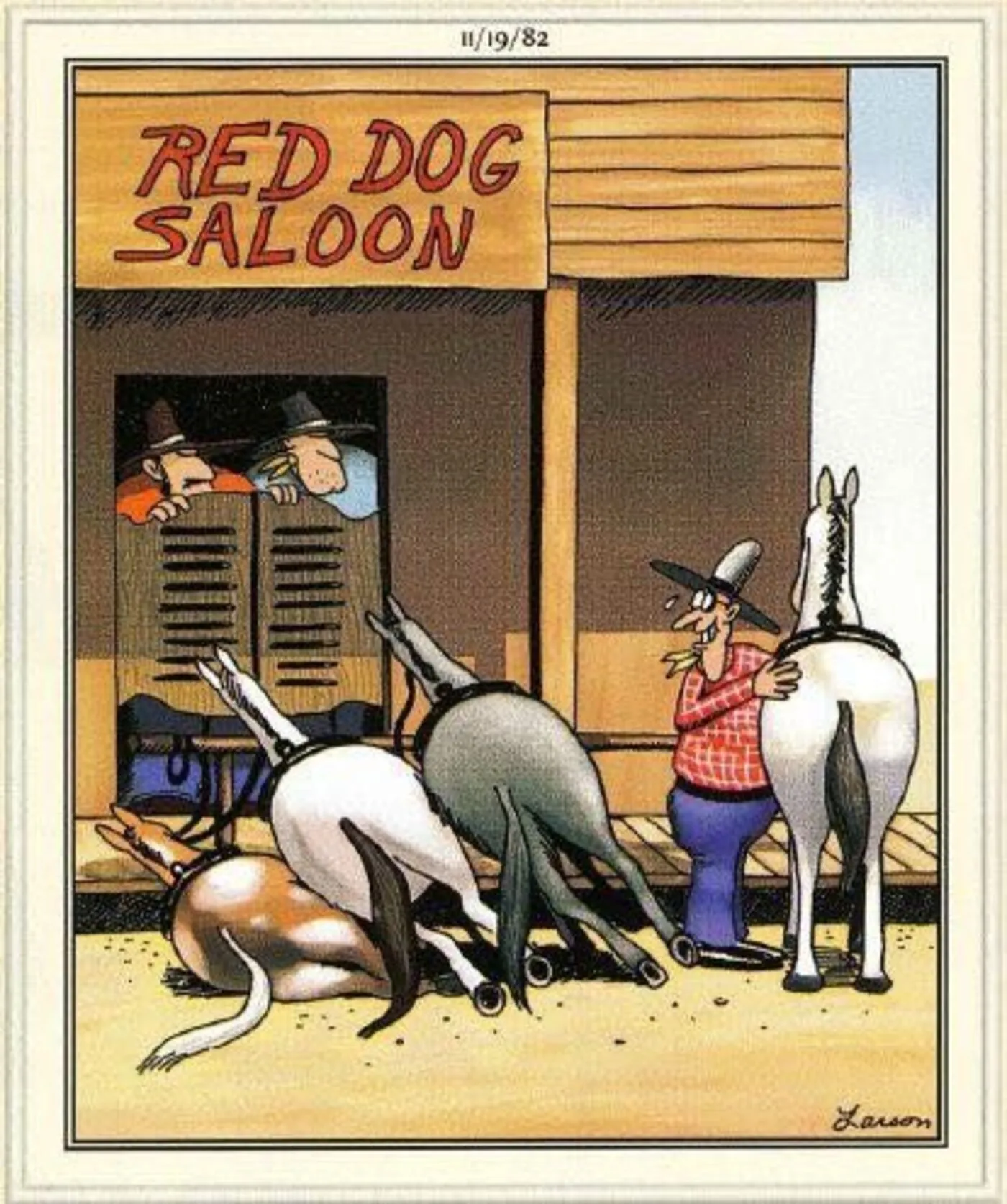
In a humorous twist on classic slapstick, one cowboy parks his horse outside the Red Dog Saloon, only to inadvertently knock over several other parked horses, causing chaos. This scene humorously contrasts with the typical depiction of cowboys as smooth operators, instead portraying them as clumsy and oblivious.
As two bystanders watch the havoc unfold, the humor derives from the unexpected antics of this dorky cowboy, poking fun at the clumsiness often overlooked in heroic narratives.
6
“Bart, You Fool!”
February 10th, 1986
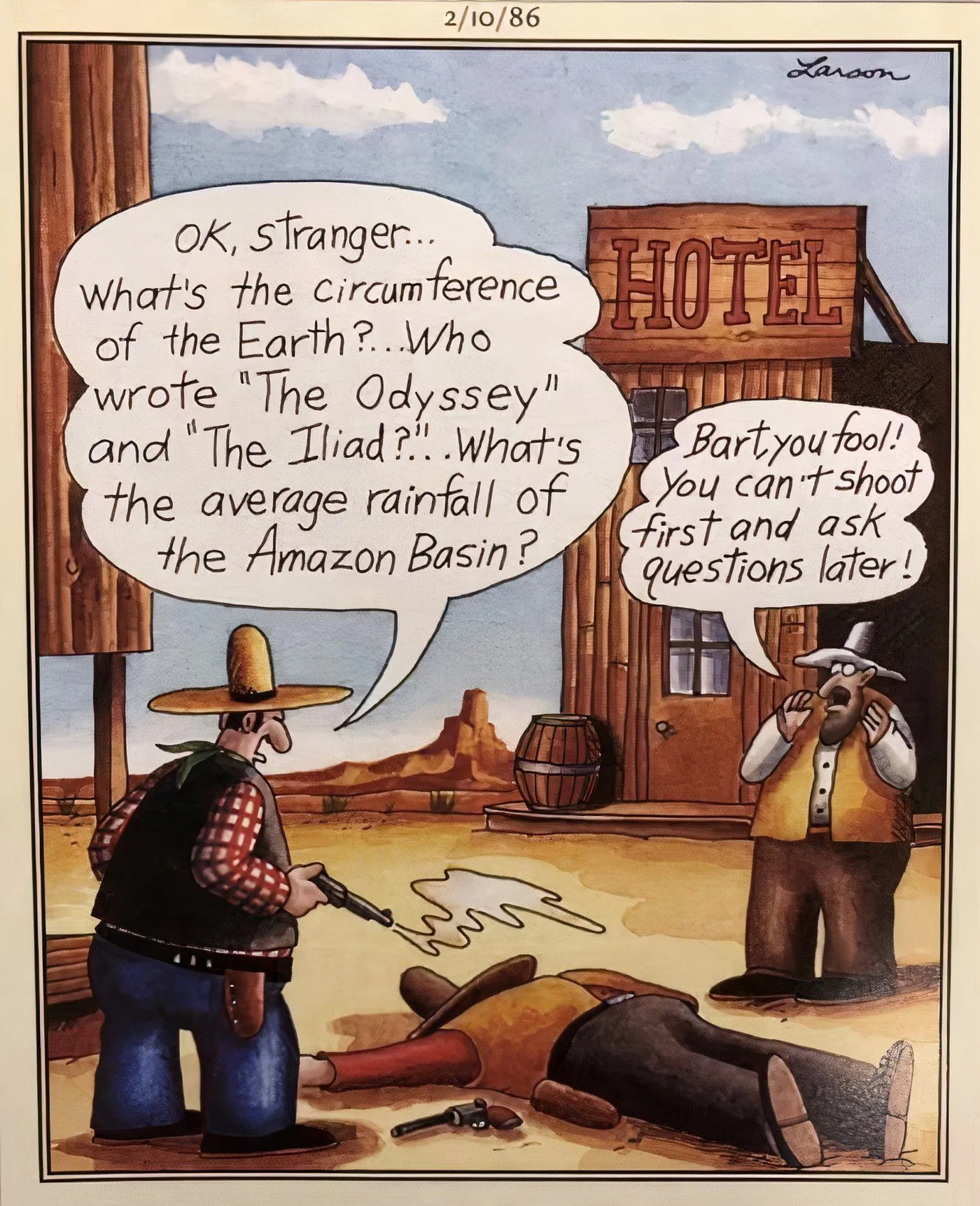
In a more ironic twist, Bart stands over a fallen cowboy while philosophically questioning life’s mysteries, like the circumference of the Earth. His distracted demeanor prompts a bystander to remind him of the old saying about shooting first and asking questions later.
This strip demonstrates Larson’s talent for wordplay and humor, as it showcases a literal interpretation of a common idiom while attributing it to a comically inept cowboy, challenging the traditional narrative of swift, decisive action in gunfights.
5
“Ride into the Sunset”
May 25th, 1992
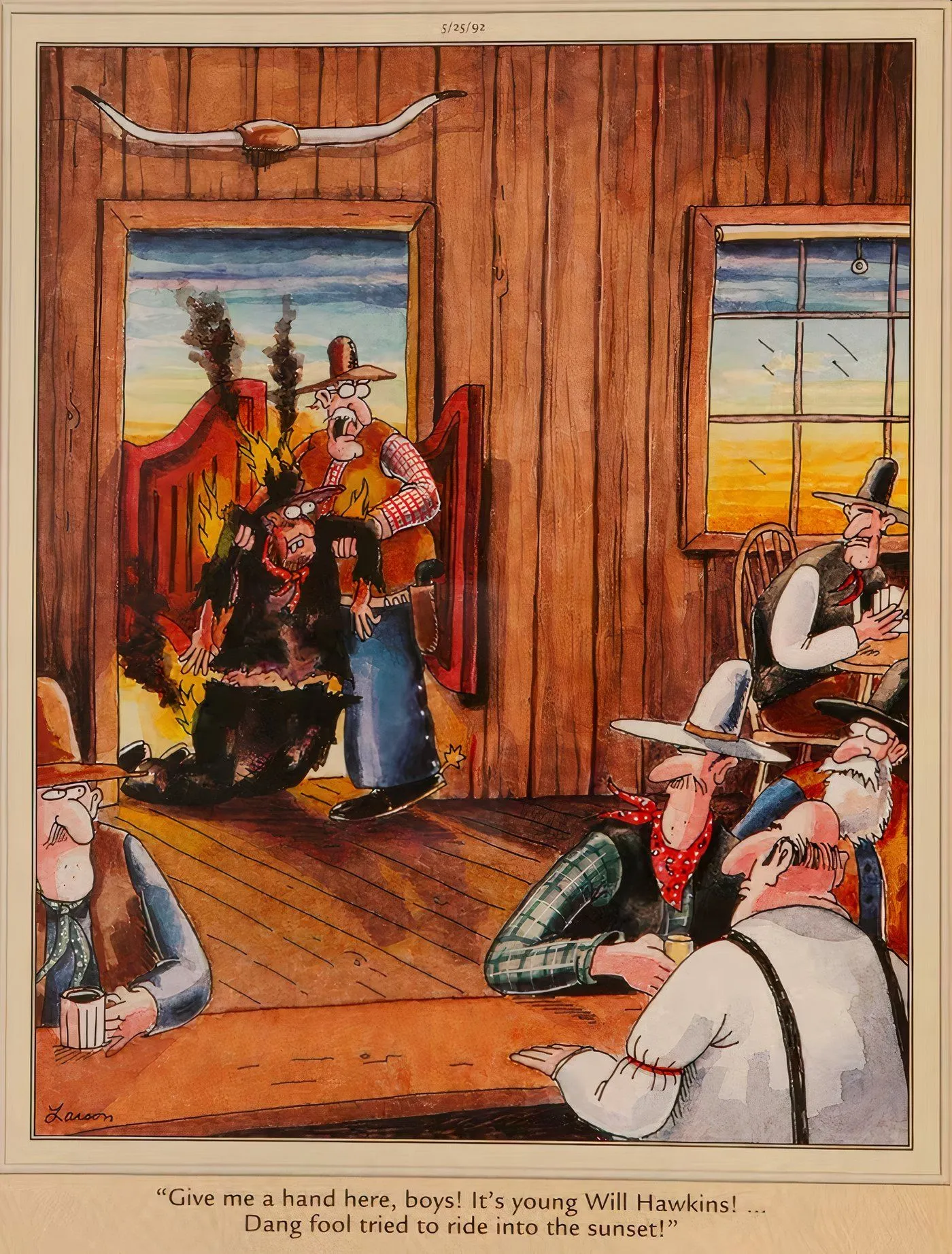
Imagining the iconic image of cowboys riding into the sunset, one character, young Will Hawkins, takes it literally—resulting in a disastrous outcome where he ends up burned and battered. Seen being dragged into a saloon, he embodies the folly that can occur when someone misinterprets poetic imagery.
This scenario cleverly critiques the often romanticized notions of cowboy culture while delivering a hilarious and relatable punchline about misguided ambitions.
4
“The Teapot Kid”
October 2nd, 1992
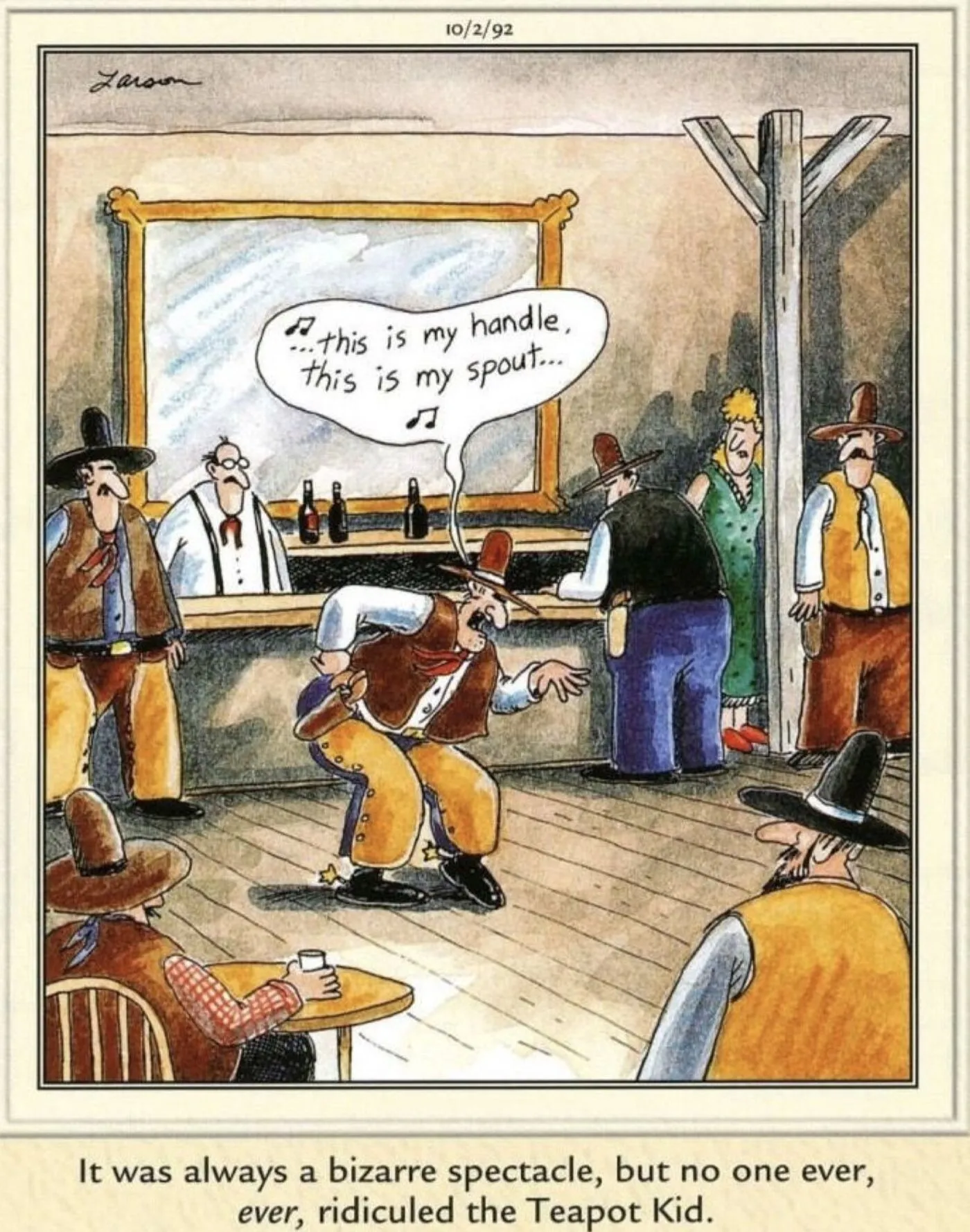
Embracing another layer of absurdity, we encounter a cowboy nicknamed the Teapot Kid, who joyously performs the “I’m a Little Teapot Dance”in a bar. This whimsical situation underscores the unconventional behaviors Larson attributes to his characters, contrasting the typical stoic cowboy demeanor.
Despite his playful antics, the Teapot Kid commands respect among his peers, revealing how a seemingly dorky activity can enthrall even the most rugged of cowboys.
3
“We Don’t Allow Any Gunplay in This Town”
January 7th, 1993
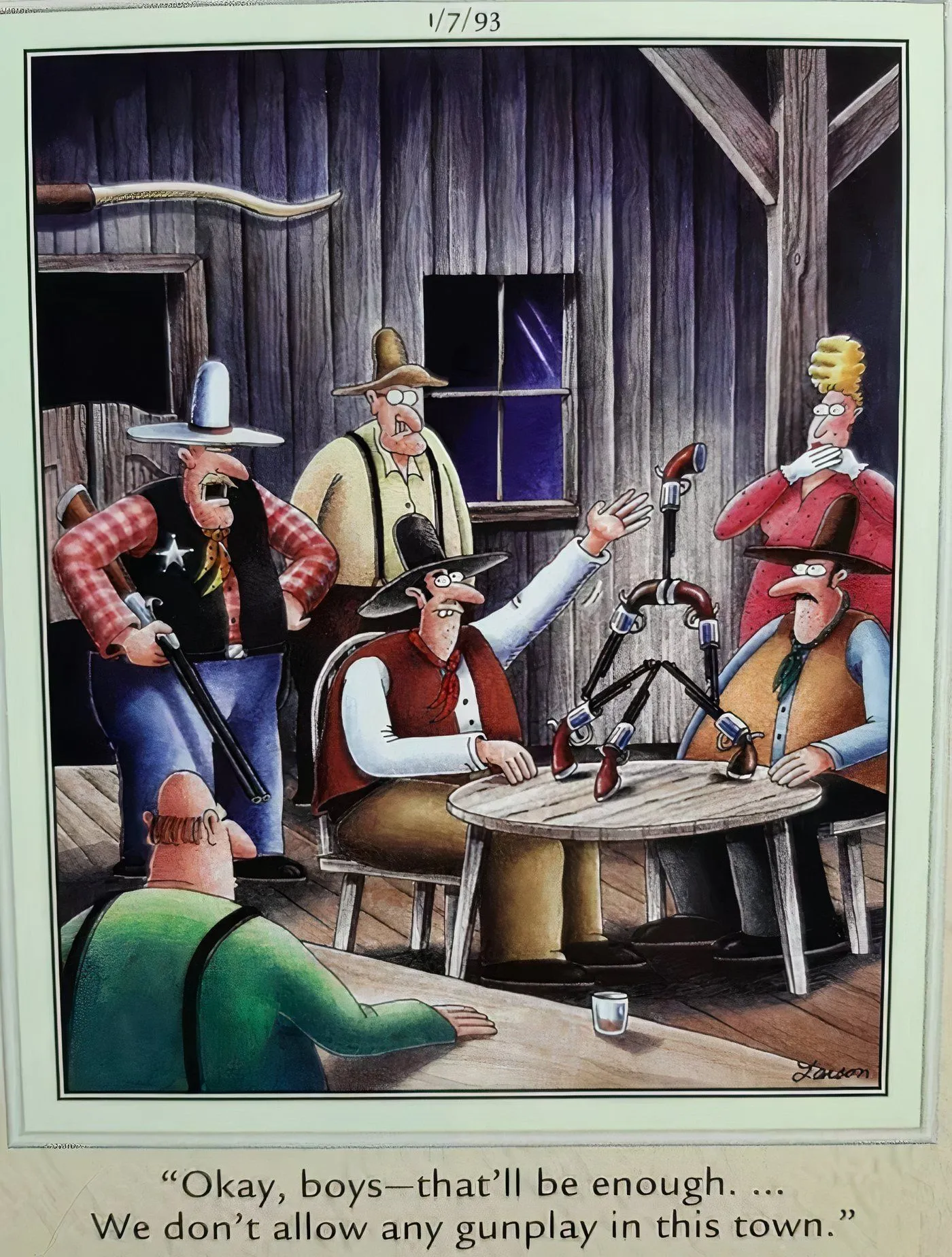
In a brilliantly crafted visual pun, two cowboys create a precarious house of cards using guns, only to be interrupted by the sheriff laying down the law against gunplay in town. This clever interplay of words presents a hilarious twist on the meaning of gunplay, intertwining playfulness with the danger typically associated with firearms.
Lively humor and creative imagery exemplify Larson’s knack for bringing laughter through unexpected interpretations, leaving readers to ponder the whimsical nature of cowboy life.
2
“A Discouraging Word”
March 24th, 1987
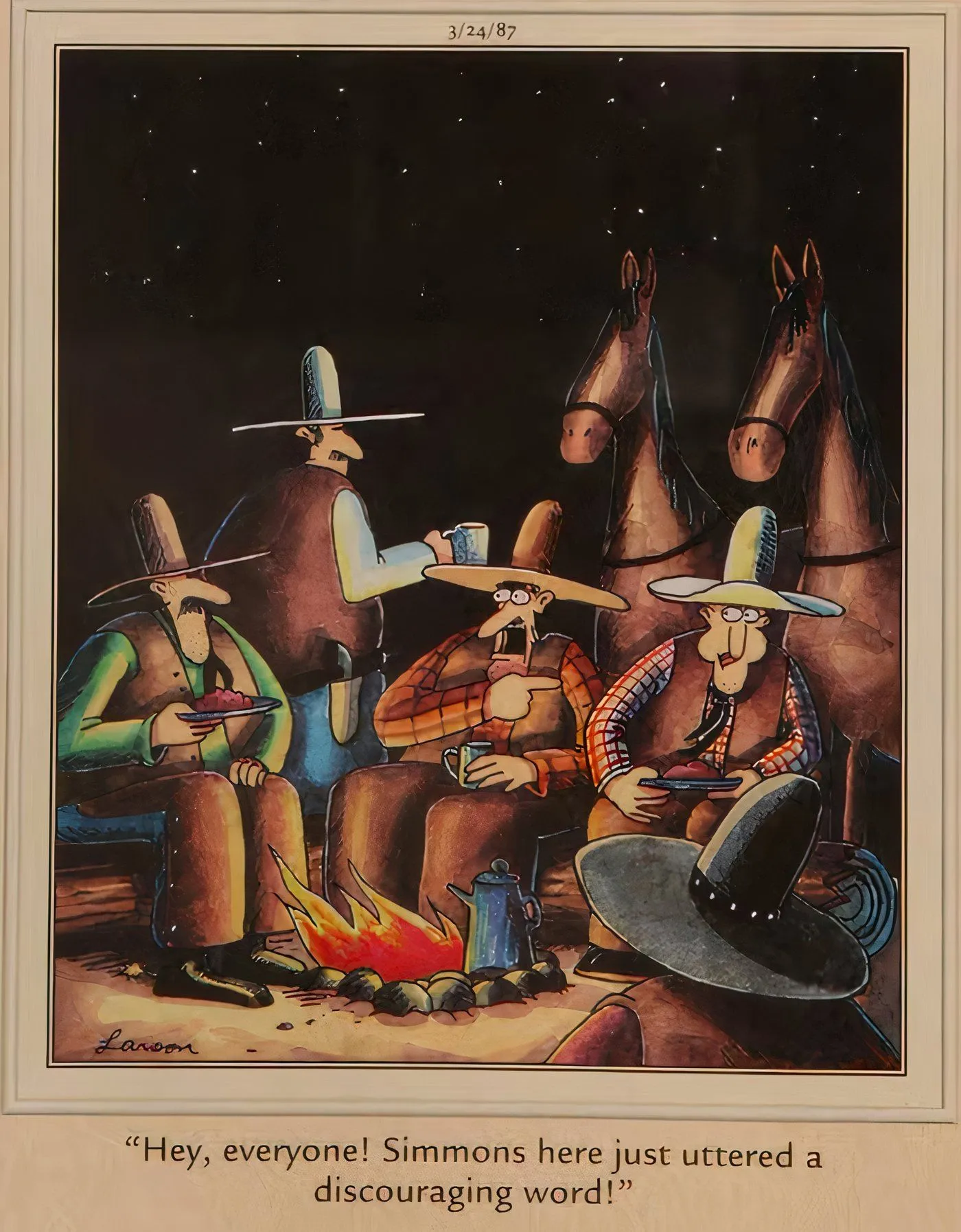
In a camaraderie-tinged moment, one cowboy accuses another, Simmons, of uttering a “discouraging word,”referencing the lyrics of the folk song “Home on the Range.”The humor lies in the juxtaposition of cowboy toughness with the childishness of the accusation, with the accuser displaying a tendency to tattle that makes him seem more of a dork than a rugged cowboy.
This strip plays off the familiar cultural narrative surrounding cowboys while adding layers of irony and humor to underscore the more mundane aspects of their lives.
1
“Play It Out”
October 29th, 1991
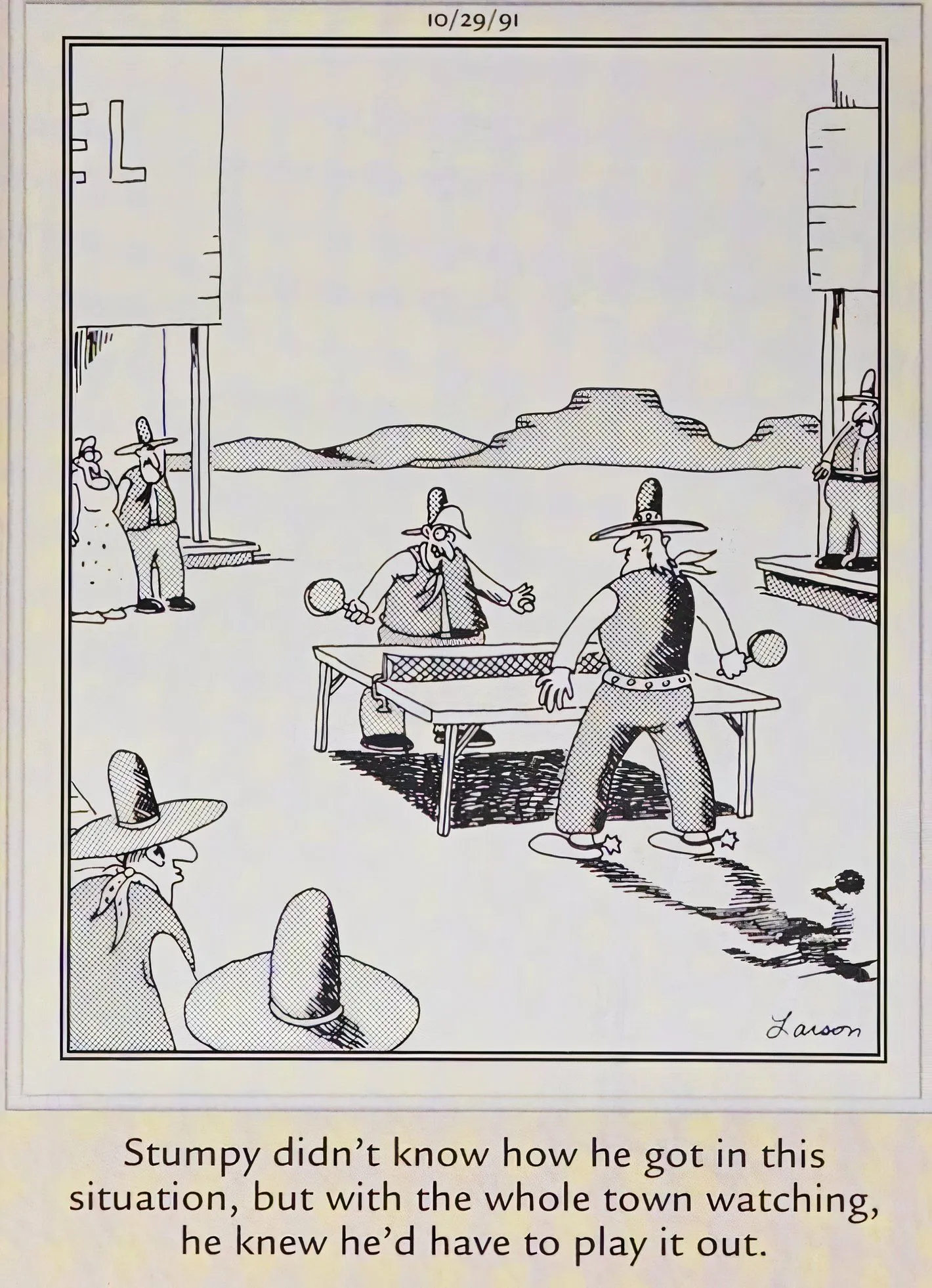
In a peculiar turn of events, two cowboys engage in what appears to be a tense duel over a game of ping pong, rather than the traditional gunfight. The shift in setting highlights the contrast between modern-day interpretations of rivalry and the historical symbolism of cowboy conflicts.
Through this surreal scenario, Larson emphasizes the humor in anachronism while reinforcing that not all conflicts need to be resolved with a showdown; sometimes, a game of table tennis will suffice—even in the Old West.
